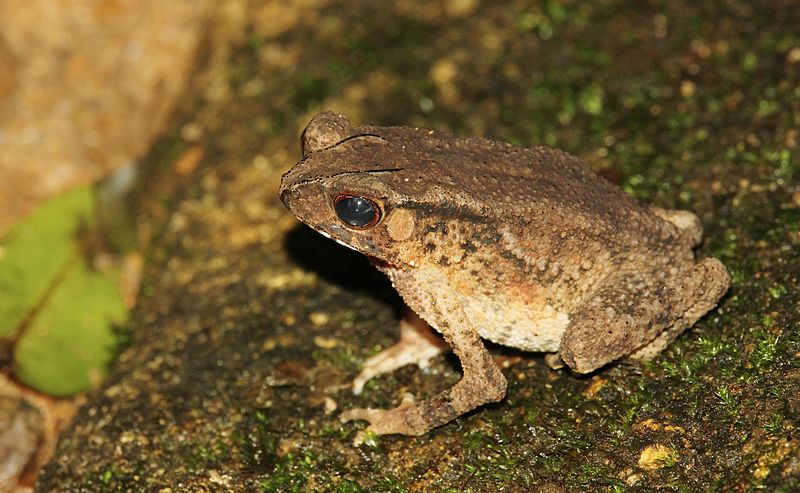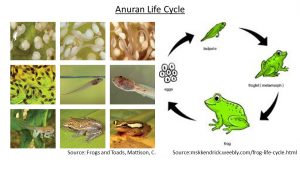Although not the favourite of many, a frog is a wonderful animal that is usually harmless and very beautiful if you look at them with the right mind.
When I was a small girl, it was my father’s job to get rid of the frogs that managed to slip in to our home. Both my mother and I would then run for our lives and hide in the room, not from the frog but my father who would catch the fellow and bring it over pretending to throw it on to us! The fear continued, until one day during my third year at University I found myself running after a frog, desperate to hold it somehow. While it got away from me despite all my attempts, I suddenly realized my fear for them has vanished away and they were the most innocent and lovable creatures in my eyes.
From thereon there wasn’t peace for any frogs who visited our home. Instead of me running away from them, now it was they who hopped away from me as I would try to take a look at them and try holding them. Curious and interested in these amazing fellows, this young girl started looking for more information and learning about their beauty.
Amphibians
Frogs are Amphibians. Amphibians are cold blooded vertebrates who are found in arboreal, terrestrial, freshwater habitats except in marine environments. They are a good ecological indicator. Wherever they are, the environment is much better. Under Class Amphibia there are two subclasses: Lissamphibia and Temnospondyli. Subclass Temnospondyli has gone extinct today. The remaining Lissamphibia includes 3 orders: Anura (frogs); Urodela (salamanders); and Apoda. In Sri Lanka, only Order Anura and Order Apoda can be seen.
The Order Apoda is sometimes called Gymnophiona. They are commonly known as caecilians. They are wormlike, legless creatures with indistinct/ hidden eyes. They have a series of annular grooves (annuli) usually present along the length of the body. Most of them burrow. There are 3 species restricted to wet & intermediate zones in Sri Lanka that are endemic to the island. They all belong to the genus Ichthyophis. The 3 species are: Ichthyophis glutinosus (Kaha Hiridanda/ Ceylon Caecilian); Ichthyophis Pseudangularis (Kuda kaha Hiridanda/ Lesser Yellow banded caecilian); and Ichthyophis Orthoplicatus (Pattipola Caecilian/ Dumburu Hiridanda)
Tail less Anurans
The Order Anura is the Order of the coveted frogs I’m so interested of. They are a diverse and largely carnivorous group. They have the iconic short-bodied, tailless adults which has given them the name Anura, meaning tail less. They have a shortened vertebral column, with hind limbs longer than forelimbs. Most of them have external fertilization. Their diversity is greatest in tropics. Sri Lanka is an amphibian hotspot owing to the unique and diverse numbers of Anurans getting discovered continuously.
Anurans, or frogs as we generally call them show metamorphosis which simplifies to “change of form”. (“meta” means to change while “morphe” means shape in Greek) They have clear, distinct forms at different stages of their life making them complete metamorphs. The 3 main periods of development can be termed eggs; larvae and adult, while the much descriptive Gosner stages classify embryo and larval stages in a standard method introduced by K L Gosner in 1960.
These frogs have different morphological features that are used in their classification. It is surprising how many details could be found on these tiny creatures and how intricate they are. There is a striking difference between male and female versions of frogs. Normally the male is smaller than the female in body size. However, the male tympanum is larger than that of females. Only males have vocal sacs and nuptial pads. They show a behaviour called amplexus which is a mating posture to ensure contact between eggs and sperm. It takes the form of a hug of the female by the male from behind. Sometimes male frogs can be seen hugging rocks and branches during the mating period.
It’s not just birds that have calls and songs. Frogs also have them! Usually the male frog makes calls and songs but there are some species where both males and females can voice calls and songs. Certain species such as the squirrel treefrog (not found in Sri Lanka) are known to have large vocal pouches that allows the sound to resonate when singing.

Currently there are 120 amphibians in Sri Lanka out of which 117 are Anurans belonging to 6 families. All of these frogs are harmless. The list keeps building everyday with the discovery of new species. The 6 families are: Bufonidae (True Toads); Dicroglossidae; Microhylidae (Narrow Mouth frogs); Ranidae (True Frogs); Rhacophoridae (Afro-Asian Tree frogs); and Nyctibatrachidae. The topography and climate of Sri Lanka facilitates a variety of unique ecosystem conditions that provide excellent conditions to different types of frogs specific to that ecosystem, making the country a hotspot for them
Among the amphibians all the caecilians are endemic to the country. From among the 117-frog species, 103 are also endemic to Sri Lanka. Not only that, four genera of frogs Adenomus, Nannophrys, Taruga, Lankanectus are only found on this island and nowhere else, while the subfamily Lankanectinae is also exclusive to our country.
Not just frogs, all amphibians are terribly threatened today. Their biggest threat is habitat loss and fragmentation. Next issue is pollution of both water and air exposing them to diseases such as Ranavirus and such. These animals are cold blooded as mentioned above. Therefore, climate change is a huge threat to them. Another unforeseen danger that might affect the is the release of nonnative, invasive amphibians (salamanders are not naturally found in our country but they are reared in aquariums which pose a possibility of their release) to local habitats through unregulated aquarium trade. While competing for the natural resources with the local species these animals can bring in parasites and diseases into exposed natural and pristine habitats.
For twenty plus years I had run away from these harmless, sweet little creatures. When and where that fear turned into this love I now have for them is still a mystery to me. My University has changed me to be this person I am today. It is worrisome that one day in the future people will talk about these amazing animals as we talk of dinosaurs now. Throughout this journey I will continue falling in love with these beauties of nature as I have so far and will strive my best to protect them.
Images Courtesy of:
- Image copyright Michael F. Benard – reptile and amphibian information
- Frogs and Toads, Mattison, C.
- mskkendrick.weebly.com/frog-life-cycle.html
- Dutta, S. K., Manamendra- Arachchi, K., 1996, The Amphibian Fauna of Sri Lanka, Wildlife Heritage Trust of Sri Lanka.
References:
- Dutta, S. K., Manamendra- Arachchi, K., 1996, The Amphibian Fauna of Sri Lanka, Wildlife Heritage Trust of Sri Lanka.
- Frost, D.R., Grant, T., et al, 2006, The amphibian tree of life. Bulletin of American Museum Natural History, 297: 1-370. (Available at: http://digitallibrary.amnh.org/dspace/handle/2246/5781)
- The National Red List of 2012 of Sri Lanka, Accessed at www.cea.lk/web/images/pdf/redlist2012.pdf
- Ukuwela, K., Amphibians of Sri Lanka, at https://sites.google.com/site/srilankaamphibians/Home
Featured Image Courtesy: https://bit.ly/2oQzKid


